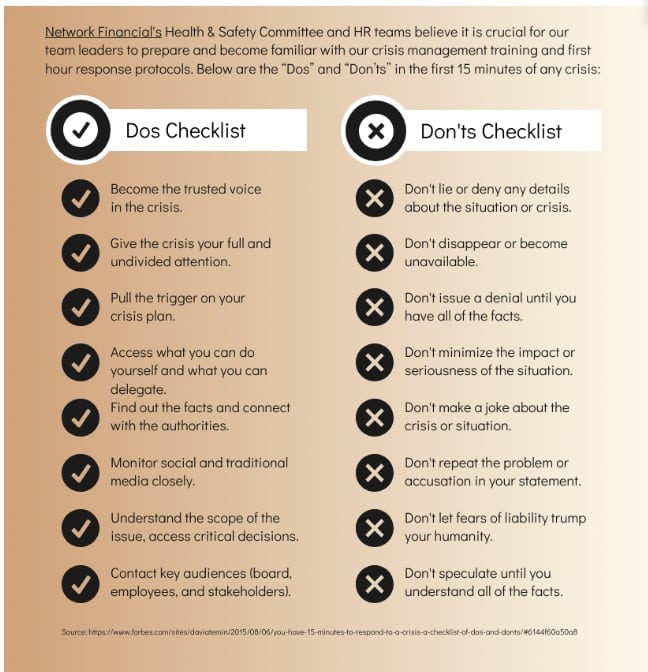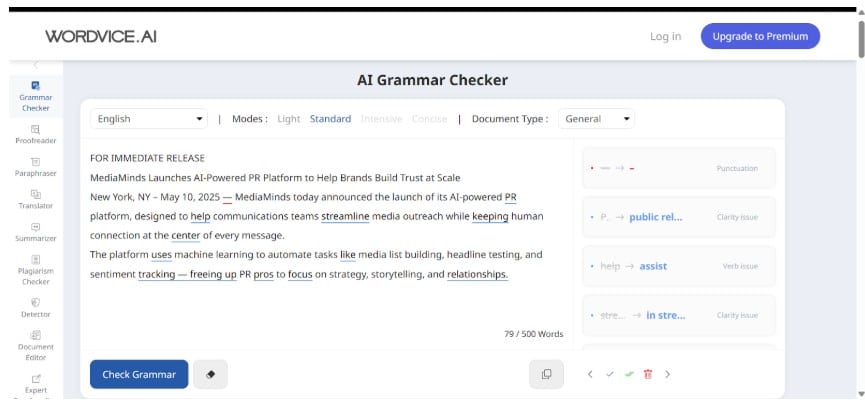AI tools have become a dream for PR professionals looking to scale campaigns with automation. But as AI gets increasingly smarter, we need to keep ethics at the front of the conversation.
How much AI is too much? Where and how do human voices fit in?
How do we draw the line between authentic PR branding and automation tools that take on some of the grunt work?
Let’s take a closer look at what it means to balance automation with authenticity so you can stay ethical in your PR practices while still capitalizing on AI’s potential.
Considerations to keep in mind
Here are some core factors to consider when considering using generative AI tools in your PR campaigns.
The trust factor
PR is built on trust. Our job is to build relationships, shape perceptions, and connect brands to real people. But if a pitch sounds like it was written by a bot, that can erode trust fast.
Audiences can sniff out AI-generated content that lacks heart or nuance. And when brands rely too heavily on automation, their messaging can feel generic, repetitive, or plain off. Worse, they might unintentionally mislead people by using content that wasn’t fact-checked.
That doesn’t mean AI is off-limits. Far from it. But it does mean we need to get intentional about where and how we use it.
The context factor
We’ve already seen brands get burned using AI without oversight. (Think tone-deaf social posts, false data in blog posts, or insensitive responses to serious events.)
Those missteps usually don’t come from malice. They come from handing too much control to tools that don’t understand context.
And who’s left picking up the pieces?
The PR team.
So even if marketing, product, or leadership sit at the conference table to discuss what they want, and decide to go full-speed ahead with AI, it’s your job to raise the red flag when needed. Push for ethical frameworks. Ask the tough questions. Be the voice of caution when everyone else is chasing efficiency.
The creativity factor
PR thrives on originality, emotional intelligence, and storytelling — all things AI still struggles to replicate. While automation can help you draft copy, find trends, or speed up research, it can’t replace the human spark that makes a campaign memorable.
Overreliance on AI can lead to formulaic content that blends into the noise. What sets a brand apart is often the unexpected angle, the clever phrasing, or the cultural insight. (And those require human intuition.)
TL;DR: Use AI to support your creative process, not substitute it. Treat it like a collaborator, not a creator.
How to find the AI automation sweet spot and stay out of ethical dilemmas
While balance means something different to every PR team, the following tips can help you find your AI automation sweet spot.
Avoid “Frankenstein” content
Too many teams are feeding AI multiple briefs and mashing together whatever it spits out. This results in Frankenstein content. A weird mix of tones, clichés, and half-truths that feels impersonal and awkward.
To avoid this, always plan your campaigns with clarity in mind:
- Who’s the audience for the campaign?
- What action do you want them to take?
- What’s the voice, tone, and purpose of the piece?
Use AI to enhance your thinking, not replace it. Give it direction. Train it on your brand’s tone and messaging. And always edit with intention.
A great way to find the balance here is by creating custom prompts with brand insights.
Here’s an example:
“Write a short press release (under 300 words) announcing [PRODUCT OR INITIATIVE], targeting [AUDIENCE TYPE, e.g., busy tech journalists or sustainability-minded consumers]. The tone should be [BRAND TONE, e.g., confident but approachable], and it should highlight [KEY MESSAGE OR VALUE PROP]. Use clear, concise language with a strong opening hook and the following quote from the company spokesperson [QUOTE].”
Then, refine what the bot generated to make sure it authentically reflects the brand tone, style, and ethos.
Don’t outsource empathy (or at least, use the right prompt)
AI can sound smart. But it doesn’t understand people.
It can’t read a room. It doesn’t really know when something goes wrong. And it absolutely cannot replace the kind of emotional intelligence PR relies on.
Empathy is the heart of PR, especially during crisis management, conflict, or change. That’s when brands need to show up with real human voices and honest, grounded messaging that meets people where they are.


If you insist on using a prompt to generate messaging, feed the bot clear empathy guidelines.
Here’s an example:
“Write a short statement (150–200 words) responding to [SITUATION, e.g., a service outage or public concern] on behalf of [BRAND NAME]. The tone should be calm, sincere, and human — no jargon or corporate speak. Acknowledge the issue directly, express genuine understanding of how it impacts people, and clearly outline what steps are being taken. Use language that shows empathy, responsibility, and care. Here’s an example of the tone we’re going for: ‘[Insert short example of empathetic messaging here].’”
This gives AI the guardrails it needs, but keeps you in control of the message.
Use AI for scale, not storytelling
Let AI handle the grunt work so humans can focus on the work that matters most.
You don’t need to waste time formatting media lists or drafting boilerplate paragraphs when tools can do that in seconds. But writing an executive’s thought leadership piece or pitching a story to a journalist from your existing email list? That kind of content creation still needs a human touch.
So, use AI for:
- Data analysis (like media monitoring and public sentiment tracking)
- Generating headline variations or social copy options
- Rewriting or summarizing long content
- Drafting internal notes or outlines
- Conducting research
And keep human oversight for:
- Any content meant to inspire action or emotional connection
- Sensitive topics or crisis responses
- Storytelling and brand voice
- Message development
- CEO leadership pieces
Also, some AI tools save time without raising major ethical concerns, like a free grammar checker. They use AI to flag grammar, spelling, and punctuation issues. It makes sense to automate this step and then leave deeper work like structural or developmental editing to a human.

The editor saves time, the copy gets cleaned up, and the message stays intact. Win-win.
What this means for the public relations industry
PR isn’t going to be replaced by AI. But PR people who use AI thoughtfully? They’ll be way ahead.
This is a moment to lead the conversation inside your organization. Help define where AI fits your team’s workflows and where it doesn’t. Advocate for transparency. Push for brand voice consistency. And make the case for keeping humanity at the center of every message you send.
Because in the end, the best PR is about trust, connection, and authenticity. AI can help us get there — but only if we stay in the driver’s seat.
➜ Looking for more ways to manage brand perception? Explore the Agility PR Solutions Resource Center. And if you want to connect with journalists, earn coverage, or track media mentions, speak to an expert about our AI-powered PR tools.



